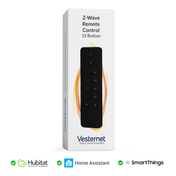Question
My dimmer / relay melted - what's going on?
Answer
Unfortunately this is a question we hear from time to time and it always makes us a bit twitchy as we're using this equipment in our own homes too!
Although scary and shocking at the time it's often the case that simply working through the available evidence will present a likely explanation.
Fortunately we've never seen a case that's been totally unexplainable, which does help to put our own minds at rest!
The three most common reasons we’ve seen for a melted dimmer / relay are:
- Incorrect Wiring / Poor Installation
- Overload
- Bulbs blowing
Let’s take a closer look at each one and see how we can reduce the chances of it happening.
Incorrect Wiring / Poor Installation
This is probably the most common reason we’ve seen and it can be easily avoided. Every devices manual has one or more wiring diagrams showing how to properly install the device.
We also do our best to keep our Application Notes Library up to date with multiple wiring diagrams for different scenarios.
Take your time to read through all the instructions and identify all existing wiring – don’t rush the installation until you are completely certain you’ve understand the diagrams!
When in doubt contact us or call an electrician!
It’s important that the device is installed into an appropriately deep wall box (pattress), making sure there’s room for the device to dissipate heat and the existing cables not to be squashed or strained. In most cases we recommend at least a 45mm deep box.
It’s also worth noticing that most devices recommend direct protection by a fuse - if you have the space in the pattress or in the wall space, you could consider something like this with a 1A fast blow glass fuse like this.

Overload
Some users inadvertently go above the Maximum Load wattage even without knowing. That’s because most dimmers / relays are rated at X Watts for Resistive Loads only.
For instance LEDs, Fluorescent lights and Low Power (with an Electronic Transformer) bulbs aren't simple resistive loads, they can generate large spikes in their current requirements - some times as much as 10 to 20 times their actual rating but typically around 5 times as much.
So if you have a device which can handle 1500 Watts (like one channel on the Fibaro dual channel relay) you might think that can handle 1500 Watts of LEDs but you'd be wrong due to the above.
Hence we recommend to down-rate to about 20% of the maximum rating of the device for these types of load.
Fluorescent loads in particular are notorious for generating huge in-rush currents as they start up. Over a period of time this can cause the relay contacts to weld together due to arcing.
We always recommend using relays with fluorescent loads but even then in-rush current can still cause issues, so we advise to go with the largest rating possible, for example the Fibaro 1 * 2.5KW.
The alternative would be to buy a "solid-state" relay to go between the output of your relay – lets say it’s a Fibaro Relay - and the load: the Fibaro turns on the solid state relay, which in turn turns on the load. Solid-state relays are immune to in-rush current and won't suffer from the problems it causes.
Bulbs blowing
To better understand why this can be harmful for your device we need to look at what happens when a bulb blows.
During the lifetime of a bulb the element gets thinner and thinner to the point where it eventually breaks at the thinnest point - this point will melt just before failure.
The resistance of the overheating element will momentarily be very low and a current surge is caused. Usually in a "normal" circuit without any home automation devices this will trip out an MCB, RCD or RCBO on a typical 6A lighting circuit, so it's easy to see that this current surge can be very high!
So with that in mind and looking at the specifications of a Fibaro Dimmer 2 for instance, which is rated to a maximum of 1.1 A (250W give or take), we can see that this potentially becomes the weak point during a current surge since it can potentially be hit with up to 1400W before the Circuit Breaker will trip.
It could be argued that in an ideal world every dimmer / relay should be protected by an in-line fuse rated below that maximum rating - but obviously the retro-fit nature of these devices makes it easy to forget that they are "appliances" in their own right.
Final Thoughts
As can be seen from the above, by following these best practices the chances of these types of incident happening can be greatly minimised.
In our opinion it's worth "doing the job properly" just for peace of mind!
Copyright Vesternet 2016
Updated: 27/01/2016









